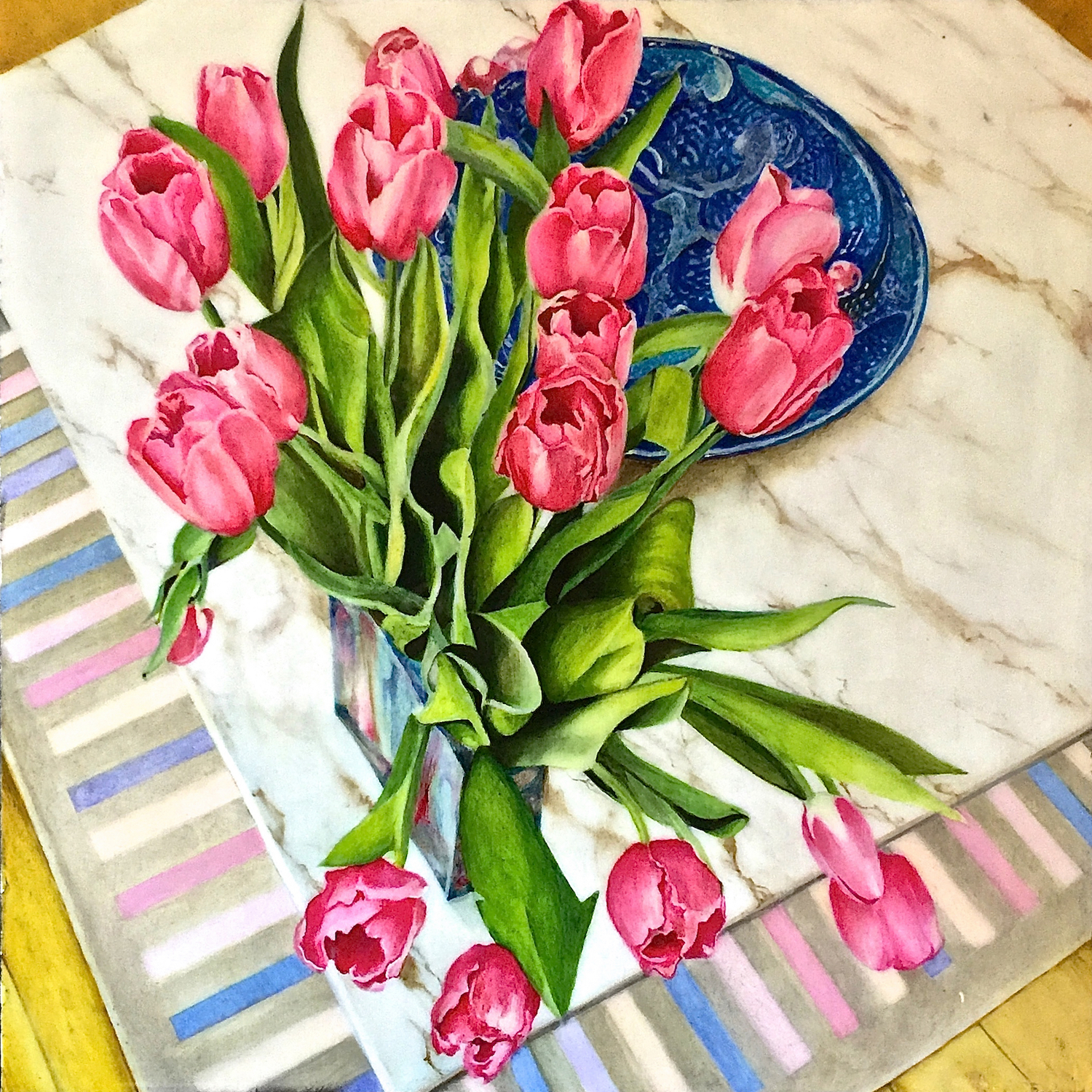Its A Beautiful Day

This is a beautiful morning. I awoke early, earlier than I normally do during the week. The sun is shining and the day holds promise. I have to slow my mind down in order to negotiate how I am going to spend it.
I have a hundred painting projects in my mind, I have wanted to write in my blog for weeks and months now only to come up dry over and over again. Have I been uninspired, or simply afraid to give myself permission to be creative?
If it’s a written narrative it must be flawless and to the point, if it’s a visual work of art it must be brilliant and solid from the get go. Striving for perfection has always been an obstacle in my path. I know where it stems from but am reluctant divulge it at this very moment.
To address it anymore would just suck my creative energy and pull me back, not forward. When asked why she painted herself so often Frieda Khalo’s response was partly narcissistic but essentially brilliant, ‘’I paint the subject I know best myself.’’ Another famous painter did the same, painted multiple self-portraits clearly to convey to the world who he was, Vincent Van Gogh.
That is a statement by Freida Khalo that I have never forgotten. The essential thing is to write and paint what you know.
A week ago I was nominated by a college friend to post an image of my ‘art, my life etc. for 10 days on Facebook without explanation, then nominate another artist to do the same each day for 10 days. At first my instinct was to shut down and ignore it completely. As an artist I have lived in a desert of seclusion mostly, never making it a priority to connect with the art community. I was more concerned about whom I could nominate than what I had to show. “What the hell!” I said to myself just do your best.
What I learned from this exercise is that I do have a body of paintings to show and collectively, they all reveal something essential about how I view the world around me. It has dawned on me with total irony that I produced some of my best work while I was ill with Hodgkin’s Lymphoma and had the luxury of time to use productively or waste while being treated for cancer.
In short at that time, I was unable to work in a way that society compels us to function and places value upon, a 9 to 5 job. Yet because of being seriously ill I was afforded that illusive luxury of time and what in turn it allowed me to accomplish as an artist. This realization hit me hard in the gut and today led me to research the subject of art, creativity and illness.
What I discovered in my search was interesting yet frustrating for its brevity and my own inability to access the full article.
Two statements taken from the Creativity Research Journal’s abstract resonated strongly for me.
- “A period of illness was modeled as creative chaos, which functioned as a time transition to a new stage of life and the production of new art.”
- “Artists who remained creative during an incapacitating or terminal illness produced work in an entirely new medium”.
In my case I had always wanted to paint with oils as I had only ever painted with Acrylics. Not knowing at that point whether I was going to live or die, I felt I had nothing to lose. So I taught myself how to paint in oils and created the oil painting titled ‘This is Spring. Not only was I producing ‘new art’ during my illness it was in fact ‘in an entirely new medium’. The complete abstract is below.
When Walls Become Doorways: Creativity, Chaos Theory, and Physical Illness
“An interdisciplinary approach combining chaos theory, art history, medicine, and psychology was used to study the impact of illness on creativity in the lives of 21 visual artists–Botticelli, Dürer, Michelangelo, Titian, Goya, Toulouse-Lautrec, Degas, Redon, Monet, Matisse, Ryder, Munch, Beaux, Marsh, O’Keeffe, Kahlo, Demuth, Blaine, Schonzeit, Flanagan, and Longo-Muth. Art history and medicine provided biographical data and physical information, and psychology offered insights into motivation and behavior. As a mathematical abstraction of behavior, chaos theory revealed the dynamics of the creative illness through an understanding of the patterns that emerged in the lives of the artists. A period of illness was modeled as creative chaos, which functioned as a time transition to a new stage of life and the production of new art. The artists studied clustered into four patterns. First, a period of illness preceded choice of a career in art. Second, illness transformed the creative process and the art produced. Third, for some artists, illness became life’s focus, with negative consequences to the artists and their art. Fourth, artists who remained creative during an incapacitating or terminal illness produced work in an entirely new medium.”
Today I was inspired by the weather, the beautiful day and Linda Roach’s Facebook exercise to express myself without fear of the negative inner voice that I and many others battle with everyday. Thank You Linda you are a kindred spirit and a true artist with the many ways in which you create every thing you with love.
- Tobi Zausner(1998) When Walls Become Doorways: Creativity, Chaos Theory, and Physical Illness, Creativity Research Journal, 11:1, 21-28, DOI: 1207/s15326934crj1101_3